I’m giving you lists and measurements of different pastas, liquids, meats, vegetables, cheeses, and extra add ins and letting you mix and match your favorites — use this guide to make any pasta you want into a quick and easy 30 minute (or less!) meal!
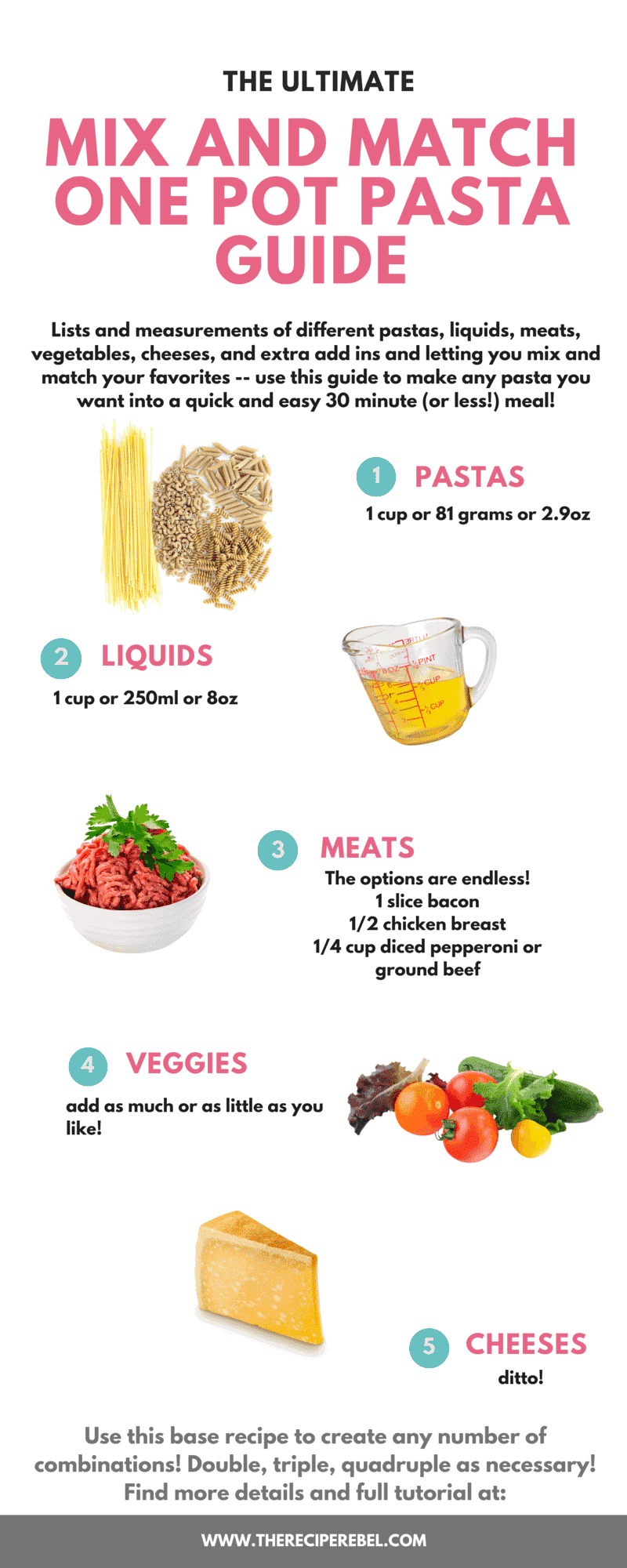
I am so excited about this post! I’ve been thinking about doing this for a long time now but I put it off until back to school. September is the time of year everyone needs some great, quick and easy meals!
I wanted to create this guide for you because the one pot pasta is my go-to pretty much any day of the week that I wasn’t thinking about making dinner until… yep, right about dinner time.
Normally, I’ll start some pasta cooking in any number of a combination of liquids, and then check the fridge to see what I can add in. It is such a great way to customize dinner to your family’s tastes or to use up some of the veggies, cheeses, or meat that has been hanging around in the fridge long enough.
I have made countless one pot pastas over the last year, and I use pretty much the same method and measurements every time. Most of these don’t even make it to the blog because, like I said, they are what I make when I’m in a rush and I rarely take the time to photograph them!
The only things I really measure are the pasta and the liquid, and the rest can really be done however you like. Adding 1 cooked chicken breast or 4 cooked chicken breasts to your pasta isn’t going to change how much liquid your pasta needs to cook in, or how long it takes — it will just be significantly “meatier”.
You can add a lot of veggies or a little veggies or no veggies — this will not change the amount of liquid your pasta needs to cook or how long it takes.
You can add a little cheese or a lot of cheese, a little spice or no spice, etc., etc., etc. — I hope you get my point!
So the reason I wanted to create this guide is to give you countless easy, 30 minute meals that will help you get through these crazy, busy, chaotic months (we all have those!) — you can take this guide and make Fettucine Alfredo or Spaghetti and Meat Sauce or Chicken Chow Mein or Mac and Cheese. Your options are endless!
Some notes on the ingredients:
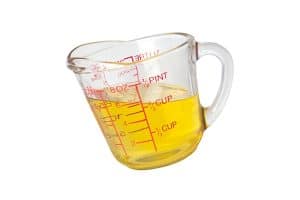
Liquids:
These are some liquids I’d recommend, but feel free to get creative!
- Water
- Milk
- Chicken/Beef/Vegetable Broth
- Tomato Juice
Most often, I use about half 1% milk and half chicken broth — this keeps things on the lighter side and also gives the pasta tons of flavor and just enough creaminess. The starch from the pasta is going to thicken any liquid you cook it in to some extent, so I don’t find whole milk necessary.
I have cooked pasta in all milk before (say for Mac & Cheese) and I actually really prefer doing about half chicken broth because it gives the sauce a smoother consistency and reheats better.
Tomato juice would be a great option if you were going to do Spaghetti and Meat Sauce or a Hamburger Helper type of pasta!
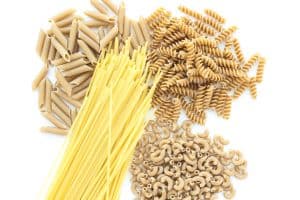
Pastas
Some options:
- Macaroni
- Penne
- Rotini
- Small shells
- Linguine
- Fettucine
- Spaghetti
- Etc. (I mean, really anything)
Some notes:
I always, always buy whole wheat or high fiber pasta unless it’s unavailable. You might need a little less water for the same amount of pasta if you’re using regular white pasta, but there shouldn’t be a big difference. I made sure to buy some white pasta to experiment with so I could see the difference and it’s reflected in the recipe below and the recipes to follow.
Smaller (thinner) pastas will always less cooking time. Something like a Spaghettini (one of my favorites for Asian dishes!) will not need nearly as much cooking time as say a Penne or Rotini. This is why I give estimates, and cues to look for rather than hard and fast numbers. This is all about experimenting and using what you have and love!
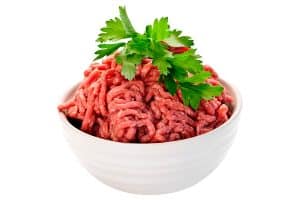
Meats
Some options (*Instructions for starting with raw meat will also be included in the recipe below):
- Deli meats such as pepperoni, cooked ham, beef, turkey, chicken, etc.
- Cooked, chopped chicken (a rotisserie chicken would be a great shortcut!)
- Browned ground beef, turkey, chicken or pork
- Italian sausage, cooked
- Cooked, crumbled bacon
- Precooked frozen meatballs
Most of the time, if I’m not using deli meat, I’m starting with raw meat. There is just no point in buying precooked meat unless you are really short on time — it takes only a few extra minutes to cook the meat before adding the pasta.
Just cook the meat completely in whichever pot you’re using to cook the pasta (before you add the pasta), and then add your pasta, liquids, and whatever else! There’s no reason at all to cook the meat in a separate pan.
I like to cook the meat completely before adding the rest of the ingredients because (a) browned meat tastes better, and the meat is not going to brown if you cook it in the liquid, and (b) it’s just safer. The meat you’re cooking might not have the same cook time as the pasta you’re cooking and you want to make sure that everything is cooked to perfection.
Also, leaving the cooked meat in the liquid while the pasta cooks for 10-15 minutes isn’t going to hurt it — it’s not going to get tough or dry out because it’s submersed in liquid, so for me, there’s no reason not to cook it completely beforehand.
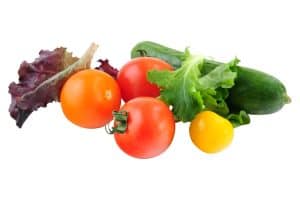
The Veg
Some options:
- diced or sliced bell peppers
- chopped spinach
- sliced mushrooms
- snow peas
- diced tomatoes or cherry tomatoes
- shredded carrots
- frozen peas
Cook before:
There are some vegetables that you might want to precook before adding the pasta and liquid, but it really depends on how you like them cooked. I find that most vegetables don’t cook completely in the liquid in the time it takes to cook the pasta. If you like some texture in your vegetables, that might be fine with you! If you like them softer, you want want to cook them or par-cook them in the pot first. Vegetables like mushrooms, sliced peppers, sliced/shredded carrots, you might want to cook first.
Cook with the pasta:
Some vegetables you might want to cook in the liquid with the pasta. Vegetables like tomatoes, peppers (especially if they’re diced or you like more texture to them), shredded carrots, snow peas, would be fine cooked in the liquid with the pasta as they don’t require much cooking time.
Add after:
If you’re adding frozen vegetables, I generally like to add those and just heat through before serving. There is really no need to cook them and you don’t want the temperature to drop too much as it is cooking the pasta.
Chopped spinach I usually add at the end because it only needs to be heated through and wilted.
If you are looking for some crunch or texture, you can also add shredded carrots, bell peppers or snow peas near the end of cooking time — it really just depends on how tender you like your vegetables!
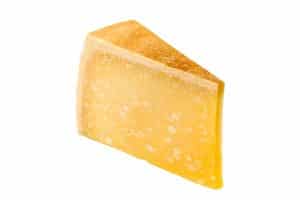
Cheeses
- cheddar
- mozzarella
- parmesan
- blue cheese
- gruyere
- etc., etc., etc.!
There are really very few rules with cheese! Add the cheese (whichever you’re using and pretty much however much you want) once the pasta is cooked and stir until melted.
The cheese also helps to thicken the sauce if it is a bit thin after cooking time.
Extras
- tomato/pizza sauce
- pesto
- condensed soup (mushroom, tomato)
- fruit (pineapple, etc.)
- ketchup
- sour cream
- spices
- salt and pepper
Most “extra” ingredients you can add as much as you want without changing the consistency of the dish substantially. Spices, salt and pepper you will adjust to your tastes.
The only things I would add at the beginning of the cooking time are salt, pepper and spices. Spices, salt and pepper you will adjust to your tastes, but I would start with ¼ tsp salt per 1 cup pasta.
The extra ingredients that add moisture, like tomato sauce, condensed soup, ketchup or sour cream, I normally limit to 1-2 cups and add them once the pasta is nearly cooked. By the end of the cook time you can see if there is a lot of liquid left or if the pasta has absorbed it all. If the pasta has absorbed all the liquid, you can add more of the extra sauces. If there is still some liquid left in the pan, some of the thicker sauces (tomato sauce, sour cream, etc.) could help to thicken the liquid that’s remaining.
My best advice would be to add these extra ingredients at the end of the cooking time, and add them gradually. Taste test as you go, and adjust everything to your tastes!
I really just want to give you some tools and tricks to help you get more comfortable experimenting on your own, and creating some quick, tasty dishes with some combinations that might be new to you!
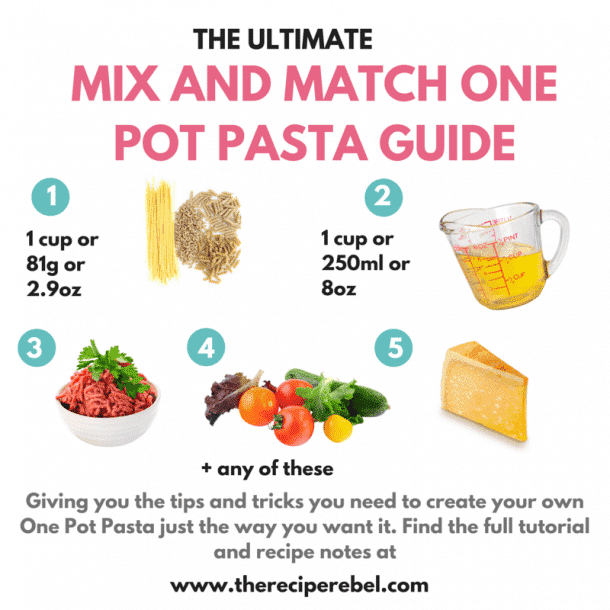
TROUBLESHOOTING
I wanted to include a section on trouble shooting some problems you might encounter so you know how to handle any curves that might come your way. Mainly, there are 2 issues you might have when making your own One Pot Pasta recipe: too much liquid and too little liquid.
Too much liquid
If your pasta is fully cooked and your pasta is still soupy, try these things:
- Half way through cooking, if it looks like there will be too much liquid, remove the lid and cook uncovered (if you had it covered)
- Stir in cheese to help thicken the sauce
- Combine equal parts corn starch and water (start small with just 1-2 tsp of each) and stir into pasta
- The sauce will continue to thicken as it sits (even without these extra measures): cover with a lid, remove from heat and let sit 5 minutes before serving
Too little liquid
If you’re not through the cooking time and your pasta is too dry and not fully cooked:
- add more liquid! Think of it like a risotto, which you add liquid to as its cooking, and keep adding liquid until it’s cooked — the same technique works here! Technically, you should use hot liquid so it doesn’t bring down the temperature. I actually don’t (I’m a rebel), I just add room temperature liquid and I added it slowly, stirring, so it doesn’t bring down the temperature too much.
SAMPLE RECIPES
Here are 4 sample recipes using my formula above.
One Pot Green Chile Mac & Cheese
One Pot Pepperoni Pizza Mac & Cheese with Bacon
The Ultimate Mix and Match One Pot Pasta Guide
Ingredients
- 1 cup chicken broth 250 ml or 8oz any liquid
- 1 cup whole wheat pasta 81 grams or 2.9 oz any pasta
- Meat
- Veggies
- Cheese
- Extras
Instructions
- If you’re starting with raw meat, cook meat in a large pot (the one you’ll use for the pasta), until cooked through.
- Add the liquid and pasta to the pot and bring to a simmer over medium high heat (if you’re using cooked meat, you can add it now).
- Reduce to medium heat and cook, stirring occasionally, for 10-15 minutes until pasta is cooked.
- Stir in cheese and extras.
Notes
*Use the formula as a guide and double, triple, quadruple the measurements as needed!
Nutrition Information
Want to save this recipe?
Create an account easily save your favorite content, so you never forget a recipe again.
Tried this recipe?
Tag @thereciperebel or hashtag #thereciperebel — I love to see what you’re making!
Tag @thereciperebel*This post contains affiliate links — I get a miniscule percentage if you purchase something through my page, and it helps me continue to put out great content!
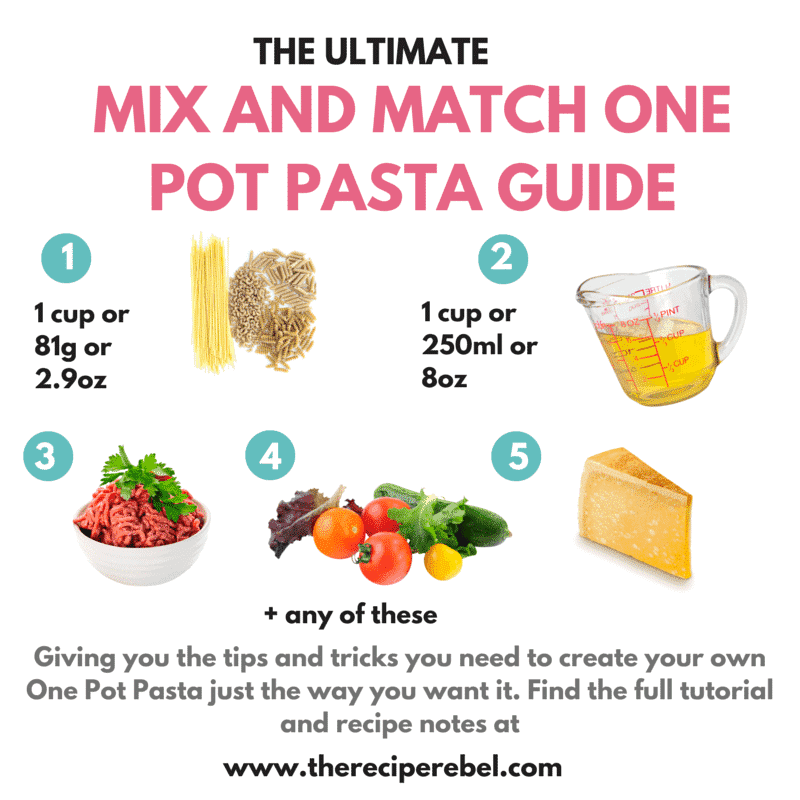

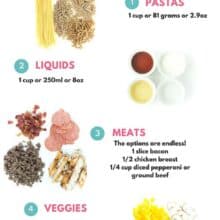
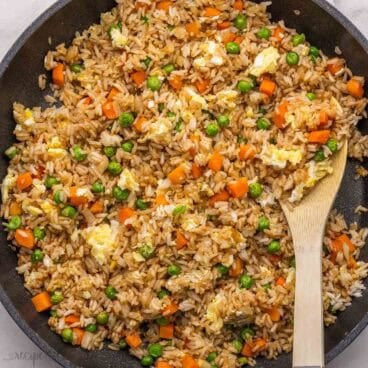
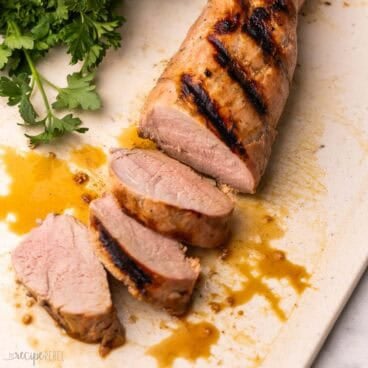
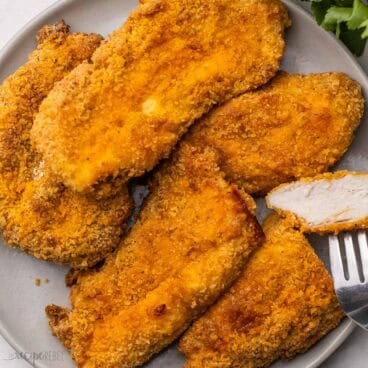
Emma says
This has been so exciting!!! Would you have a formula for rice?
The Recipe Rebel says
I’m sorry, I don’t Emma. Glad you are enjoying this one!
Melanie says
What are your thoughts on timing using fresh pasta and the liquid ratio for jarred sauce?
Ashley Fehr says
Hi Melanie! Unfortunately I don’t usually make this recipe with fresh pasta. I would guess you’d need less liquid but I can’t say how much for sure.
Chana Goldreich says
Thank you so much Ashlei, I was looking for a post on ratio pasta to liquid in “one pot” pasta recipes, and I found your very exaustive and informative post. Exactly what I was looking for. well researched and explained. Thank you for sharing!
Ashley Fehr says
Thank you Chana!
Working Wife Trying to Feed My Home says
I’ve now tried several “one pot” pasta recipes. most use a 1:1 liquid: pasta ratio… but none of them have worked. they’ve all left me with undercooked or overcooked pasta. for example tonight I cooked 1 cup of penne in 1.5 cups of chicken stock w/ onions & garlic. 40mins and over 1 cup of additional fluid later… still not fully cooked. I use my trusty 4 qt. ceramic lined pot w/ lid. I’m not angry that this didn’t work I’m just not sure how to adjust what I’m doing… maybe one pot pasta isn’t for me.
Ashley Fehr says
That definitely doesn’t sound right! Is it staying at a low simmer? Mine takes maybe 12-15 minutes usually, unless I’m using a very large cut of pasta like rigatoni
Cobi says
Woah! So good! I made this with bacon I fried up before, a whole garden tomato in small piece, and about a tap of Cajun spices. I cooked the noodles in half water half milk and it was so delicious!
Ashley Fehr says
I’m so happy to hear that!
Melanie says
I always get a little anxious with one pot pastas. Is it better to use a frying pan or an actual pot? Also, how high are the sides of the frying pans you use for your ‘skillet’ meals?
Ashley Fehr says
I like to use a frying pan because it’s easier to stir and heats more evenly. Mine are maybe 2″ high
Jen says
I don’t normally comment on things like this, but I gotta say I’ve used this post twice and it’s been excellent! I can’t believe I used to try to make sauce from scratch!
Ashley Fehr says
I’m so glad to hear that Jen! I still use it almost every week!
Diana says
Oh my goodness, this post is awesome! Thank you so much for taking the time to write this! I really have no idea what to do unless I’m following an exact recipe so this is super helpful.:) XO
Christian says
When do you suggest adding in broccoli if you want it soft?
Ashley Fehr says
I think it depends how large the pieces are. If they are very small, in the last 5 minutes should be fine. If they are larger, maybe 10-12.
Maryann Walsh says
I’m a recipe rebel as well – love to read recipes but never use them. Your casual cooking method suits me perfecty.
Natalie @ Tastes Lovely says
This is amazing! You’re the best for putting this together Ashley! What a lifesaver : )
Izzy says
This is seriously one of m favorite posts, Ashley!! I’ve been wanting make a one pot pasta dish or while but had no idea where to start, so this is perfect! I can’t wait to start experimenting with different ingredients!
Stacey @ Bake Eat Repeat says
Great post Ashley, this is a perfect guide for quick and easy meals for those busy school nights! I love one pot pasta dishes, they’re so convenient!
Ashley Fehr says
Thanks Stacey!
Kelly - Life Made Sweeter says
This is such an awesome post! One pot meals are a favorite especially during busy weeknights once school starts. I love all the different options you gave! It’s the perfect guide!:)
Ashley Fehr says
Thanks Kelly! They are a favorite here too!
Dorothy Dunton says
Hi Stacey! Very informative! I like one pot meals for the obvious reason, one pot! I also like them because the flavors get to mingle! Whenever I make or share a recipe I jot down alternative or additional ingredients so that there are options.
Ashley Fehr says
Thanks Dorothy! Less dishes is always better!
Katalina @ Peas & Peonies says
Loving this post so much, as a pasta lover I am pinning this!
Ashley Fehr says
Thanks Katalina!
Rachel @ Bakerita says
This post is brilliant – love it! Such a good idea 🙂 can’t wait to try this!
Ashley Fehr says
Thanks Rachel!
marcie says
This is a great guide, Ashley — pasta is always such a great way to use whatever you’ve got, and it’s so fast too! Pinned, and have a great weekend!
Ashley Fehr says
Thanks Marcie! You have a great weekend too!
Gayle @ Pumpkin 'N Spice says
I LOVE, LOVE, LOVE this post, Ashley! Such a great idea to make a mix and match pasta guide. I love making one pot meals like this too, and you have everything laid out so perfectly! Love your add-ins and recipe ideas. Pinned!
Ashley Fehr says
Thanks Gayle! It was a labor of love 🙂
Anu-My Ginger Garlic Kitchen says
Wow! What a genius post. I can see why you are so excited about this post. This is an ultimate one pot pasta guide, Ashely Loved it! 🙂
Ashley Fehr says
Thanks Anu!